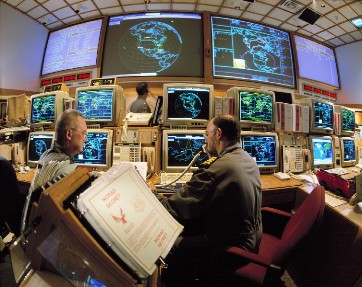 NORAD - Keeping an eye towards the sky to protect the United States.
NORAD - Keeping an eye towards the sky to protect the United States.
In the early dawn hours of November 9th, 1979, just a month and a half after the inexplicable Vela Incident, crews manning the underground missile silos along the American Great Plains received an urgent alert. Early warning satellites had detected that Soviet nuclear missiles were in flight, soon to rain apocalyptic fire and death upon the United States. This was not a drill (repeat, this was not a drill!). The soldiers manned their stations, and braced themselves for the unthinkable: the possibility of launching their ballistic nuclear missiles in retaliation. There was little time for considering options, as there were apparently hundreds of megatons worth of atomic weapons en route at high speeds. It seemed the world was about to end, courtesy of the world's superpowers.
This alert was not limited to the US intercontinental ballistic missile (ICBM) force. The entire U.S. air defense interceptor force was put on alert, and at least 10 fighters took off. The National Emergency Airborne Command Post– the "doomsday plane"– also took to the sky, although the president was not on board. The United States was falling into its doomsday contingency plan, preparing for the worst.
Read the rest of this article »